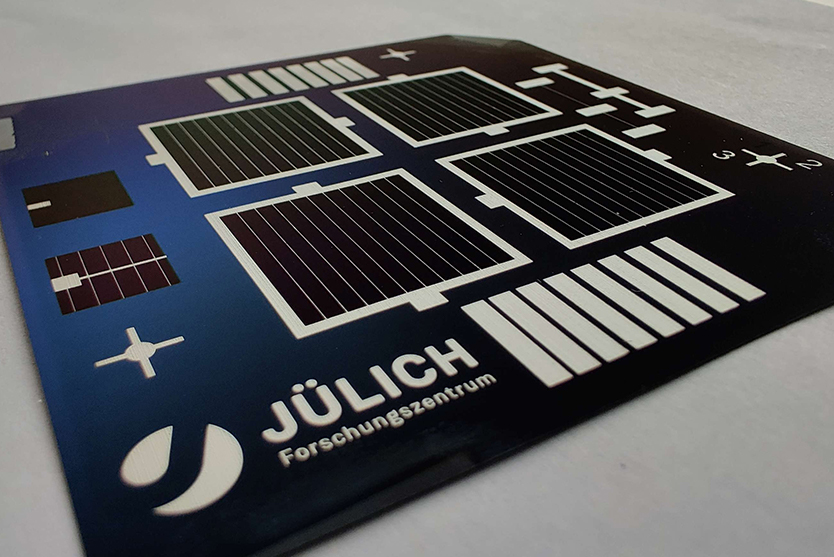
A new PV design innovation is the addition of ultra-thin, nanostructured layers which have a “passivation effect”.
© Forschungszentrum Jülich
In sunny locations, photovoltaic (PV) systems can produce electricity for less than two euro cents per kilowatt hour. And the price drops even further in direct correlation with how efficient the system is. Scientists are therefore working hard to design silicon cells that exceed the market average of 23 percent efficiency, and could one day even pass the current world record of 26 percent.
An international working group, led by the Jülich Research Centre, has just published details of a new prototype TPC (Transparent Passivating Contact) cell in the journal Nature Energy. The key design innovation is the addition of ultra-thin, nanostructured layers which have a “passivation effect”. Essentially, this reduces the neutralising effects that occur when the negative and positive charged carriers combine and cancel each other out – also known as recombination.
"Our nanostructured layers offer precisely this desired passivation," says Malte Köhler from the Jülich Institute for Energy and Climate Research in a press release. The former PhD student is the first author of the report which details the steps his team followed to achieve the prototype. The nano-layers are also transparent, which means light is barely diminished, and exhibit good electrical conductivity.
"No other approach so far combines these three properties – passivation, transparency, conductivity – as well as our new design," says Dr Kaining Ding, head of the Jülich working group in the release. "In addition, we have only used processes in manufacturing that can be integrated relatively quickly into series production."
The Julich team worked with institutes from The Netherlands, China, Russia and Ecuador, as well as the German universities of RWTH Aachen and Duisburg-Essen. Their findings have been independently verified by the CalTeC laboratory at the Institute for Solar Energy Research, Hamelin.


